WWII Paluzza Italy U.S. Infantry & Armored Division Allied Italian Campaign Italy Combat Map
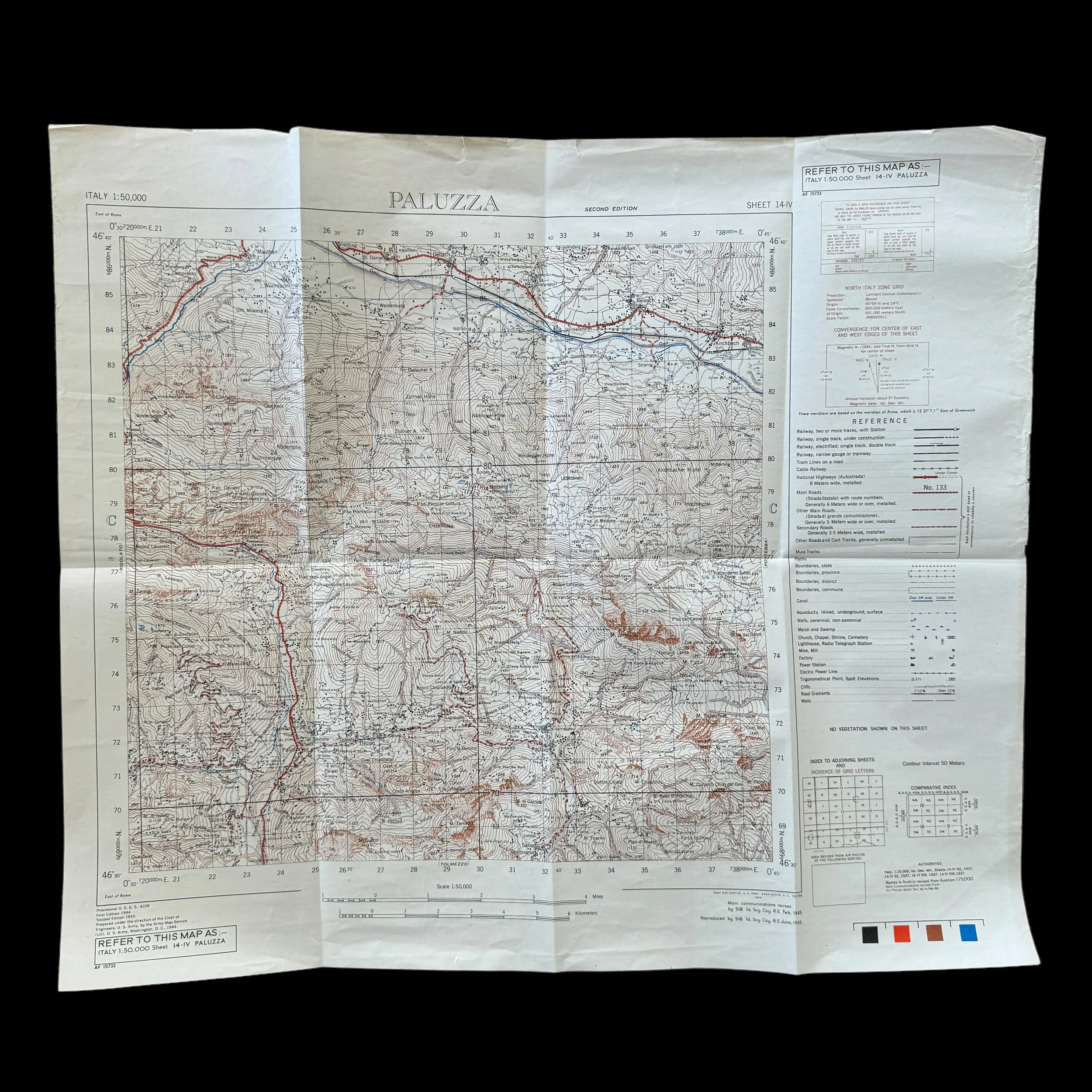
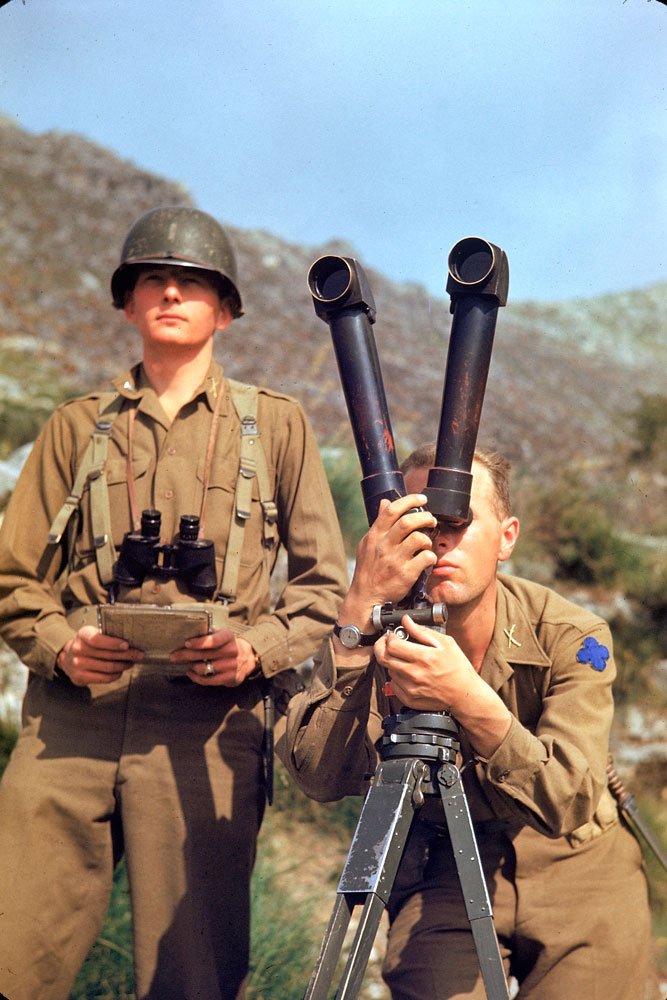
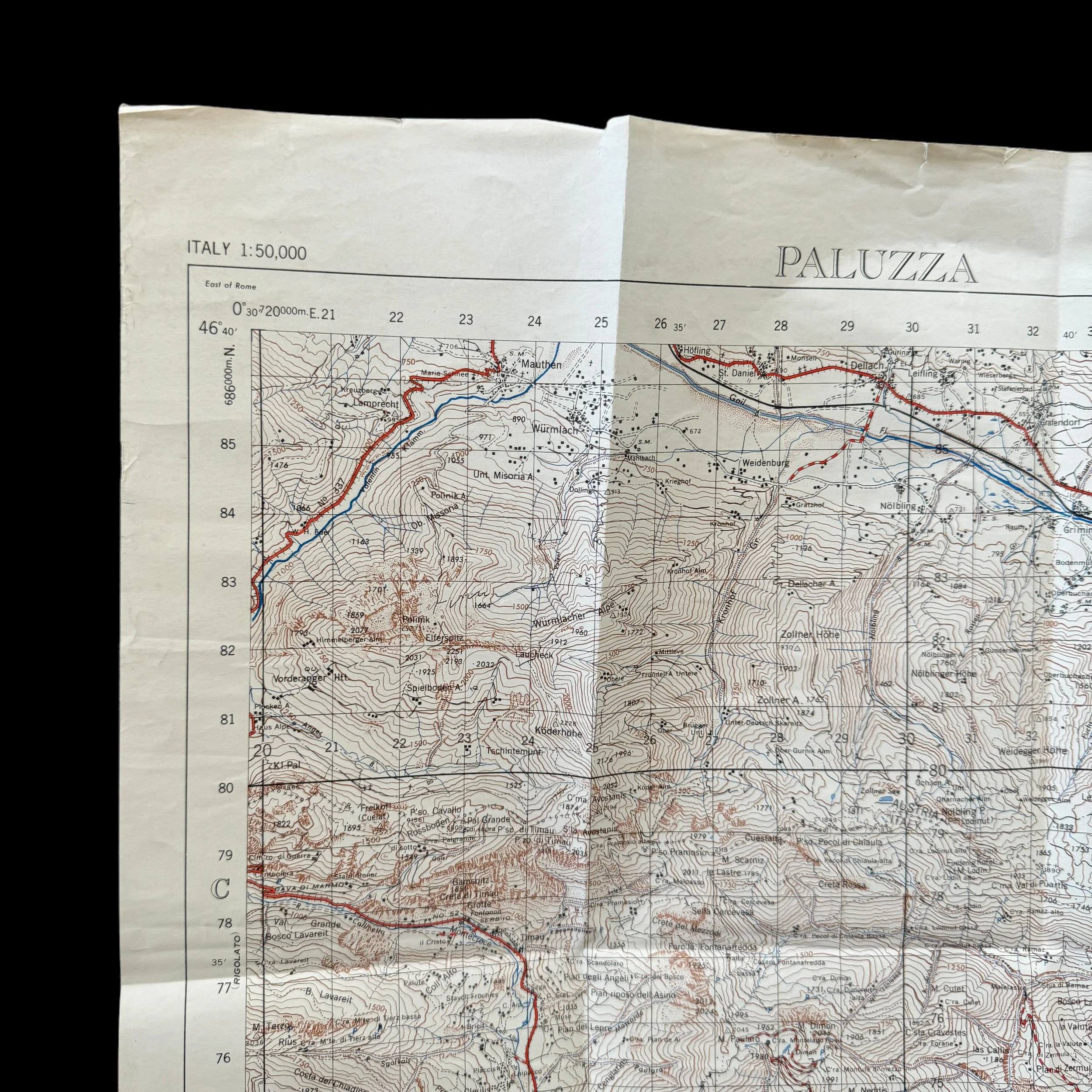
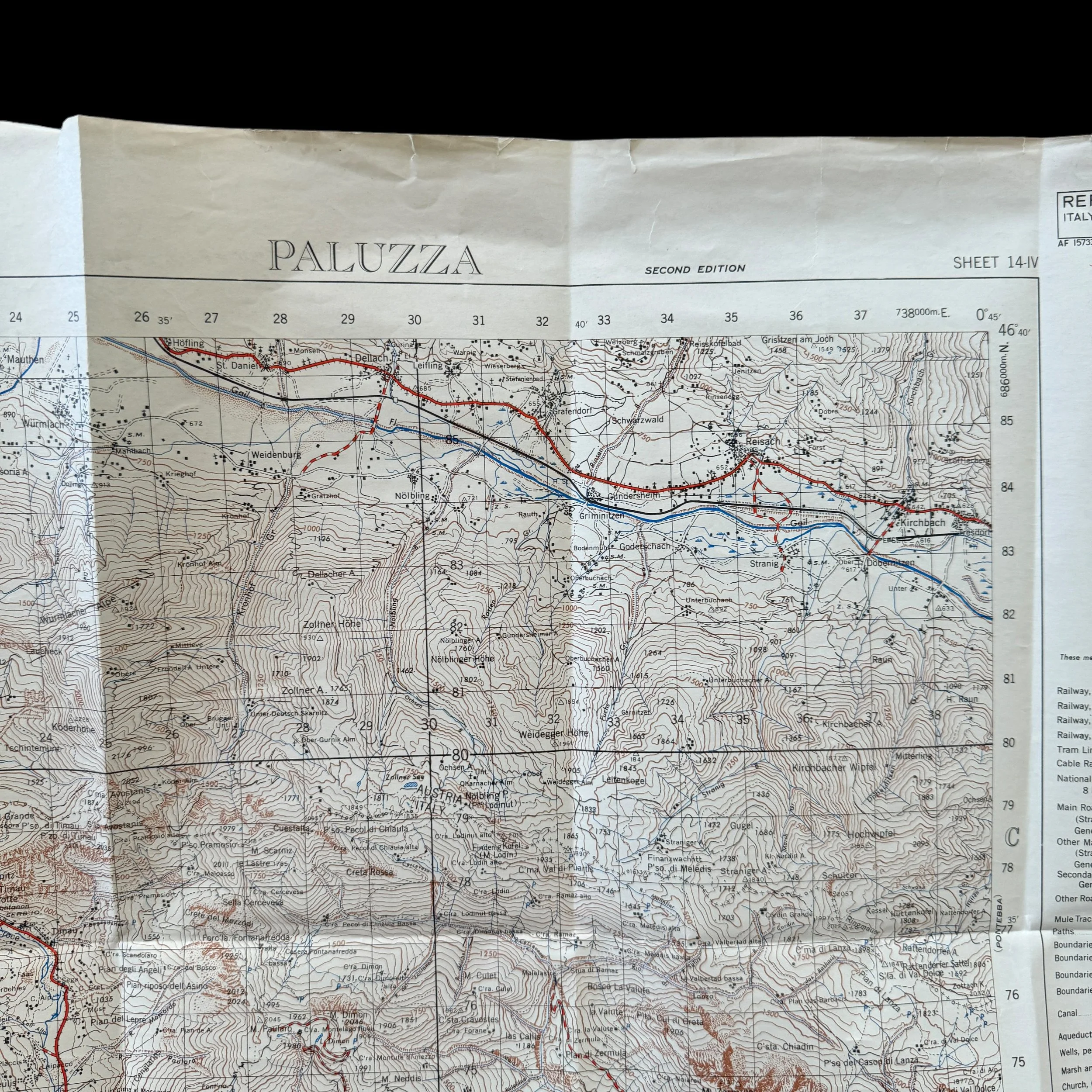
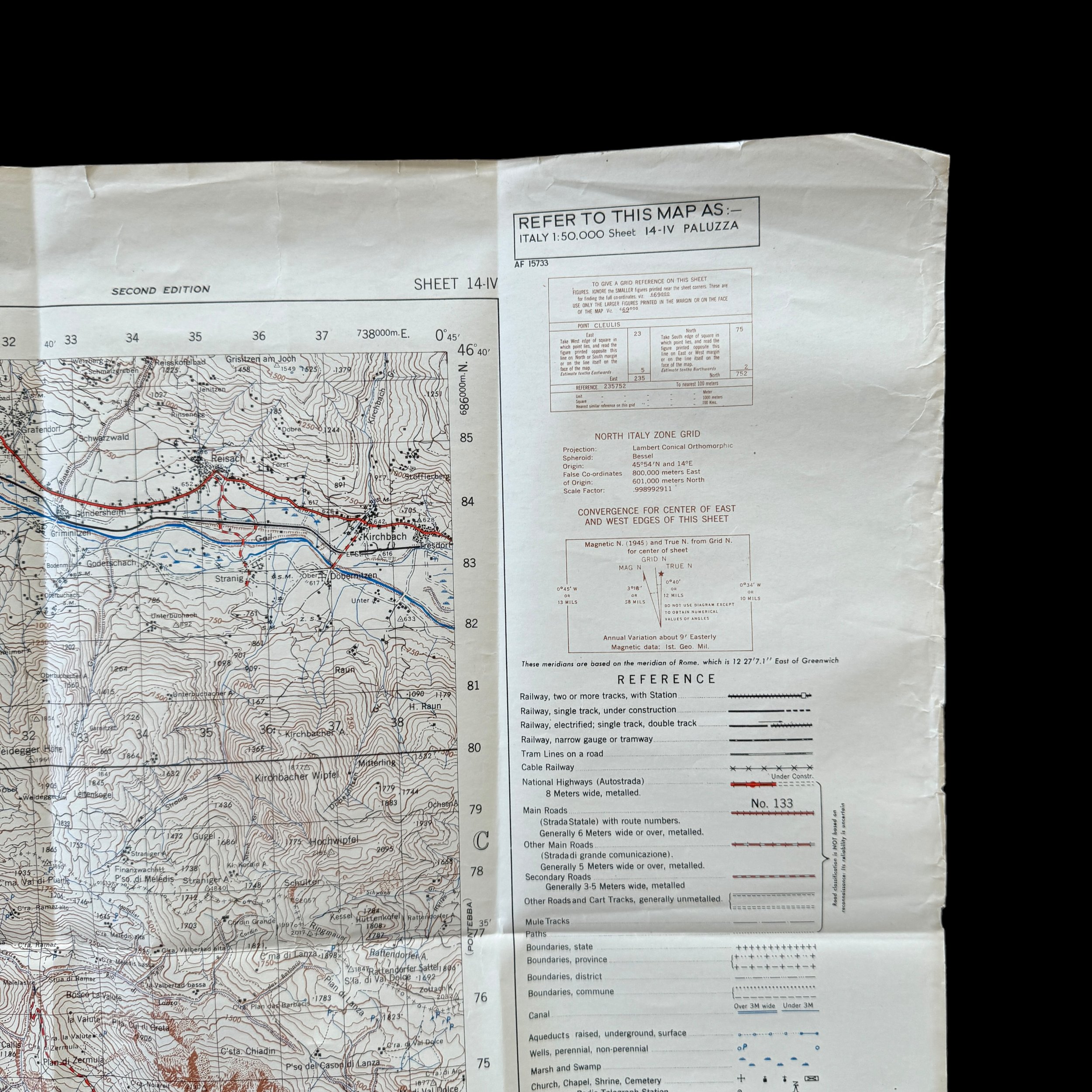

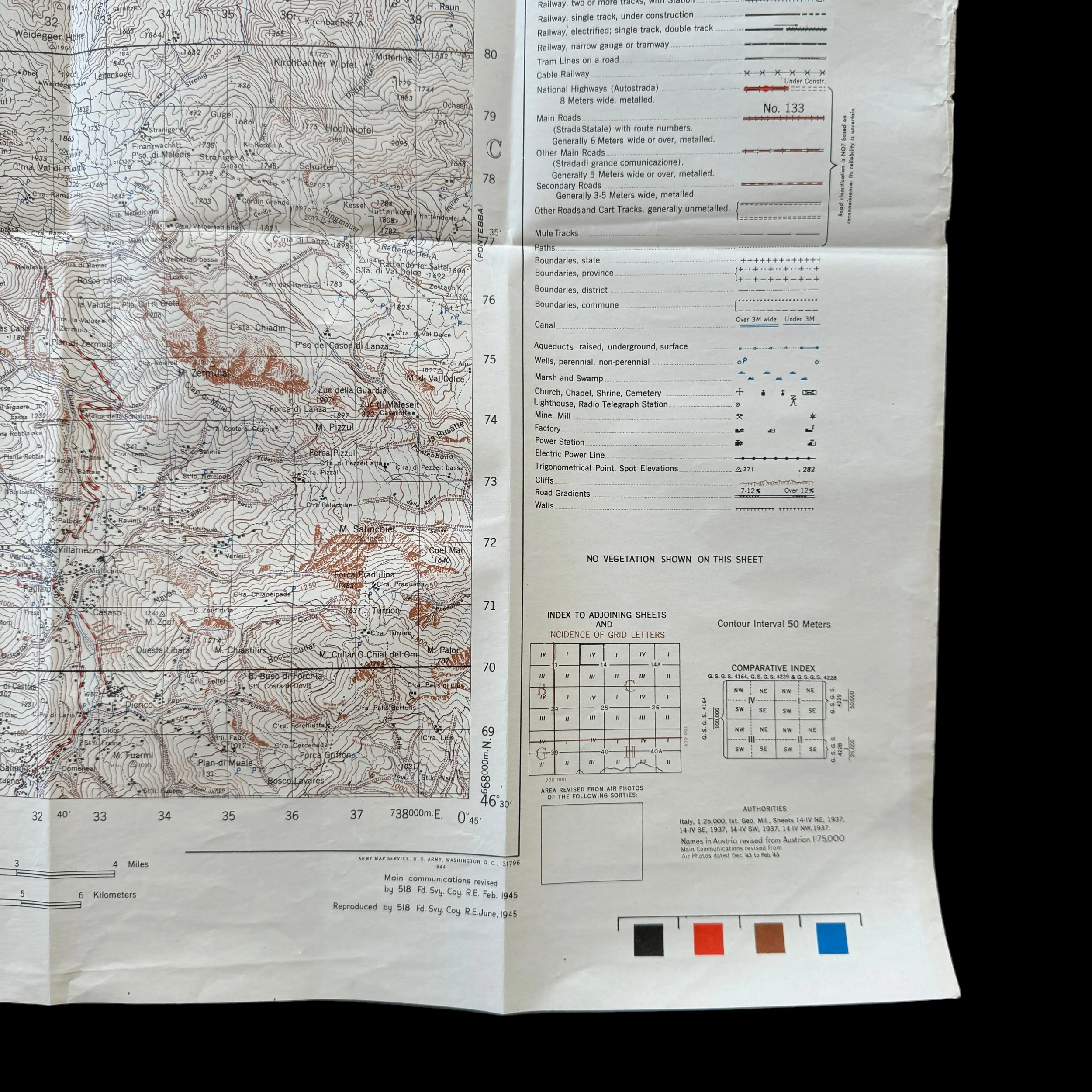
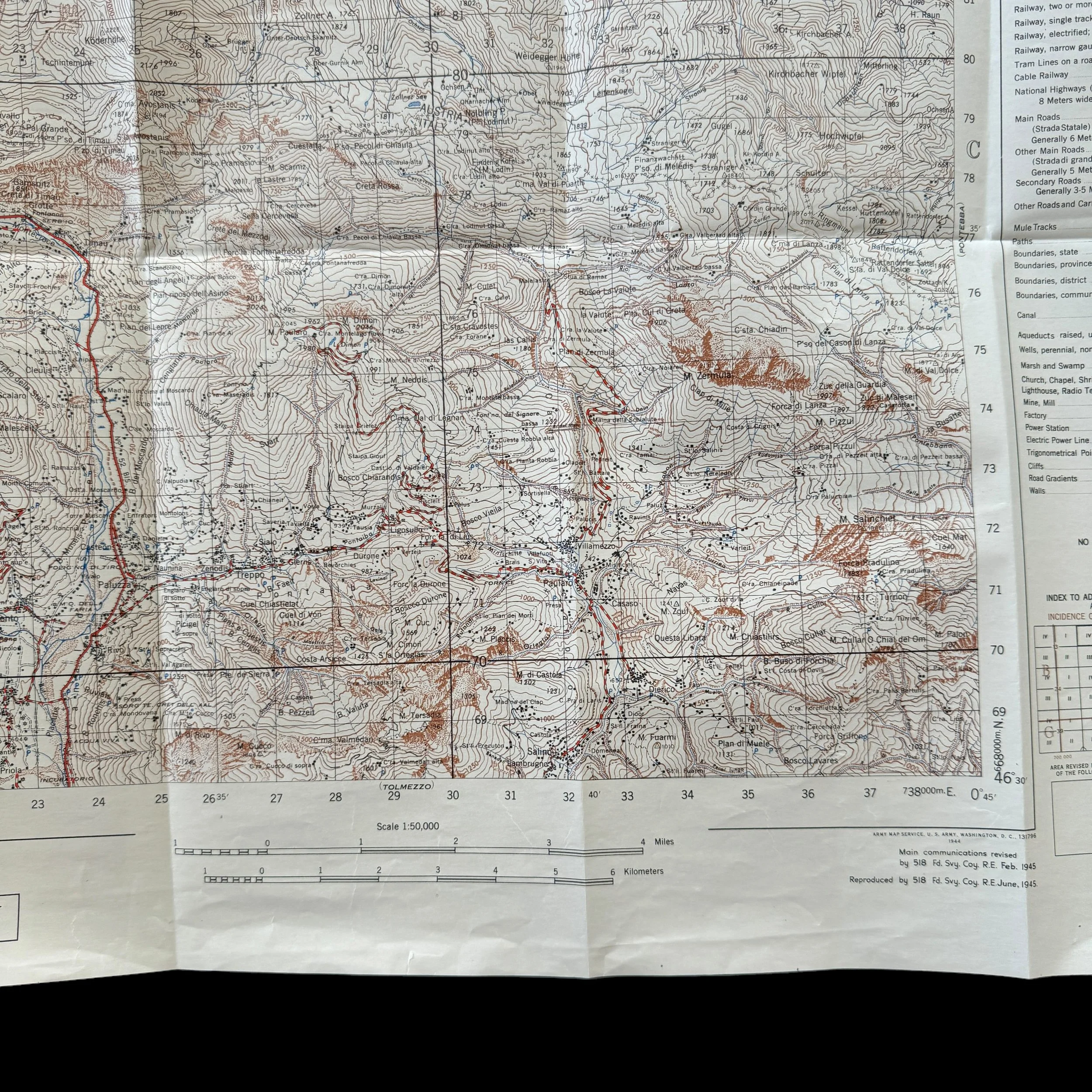
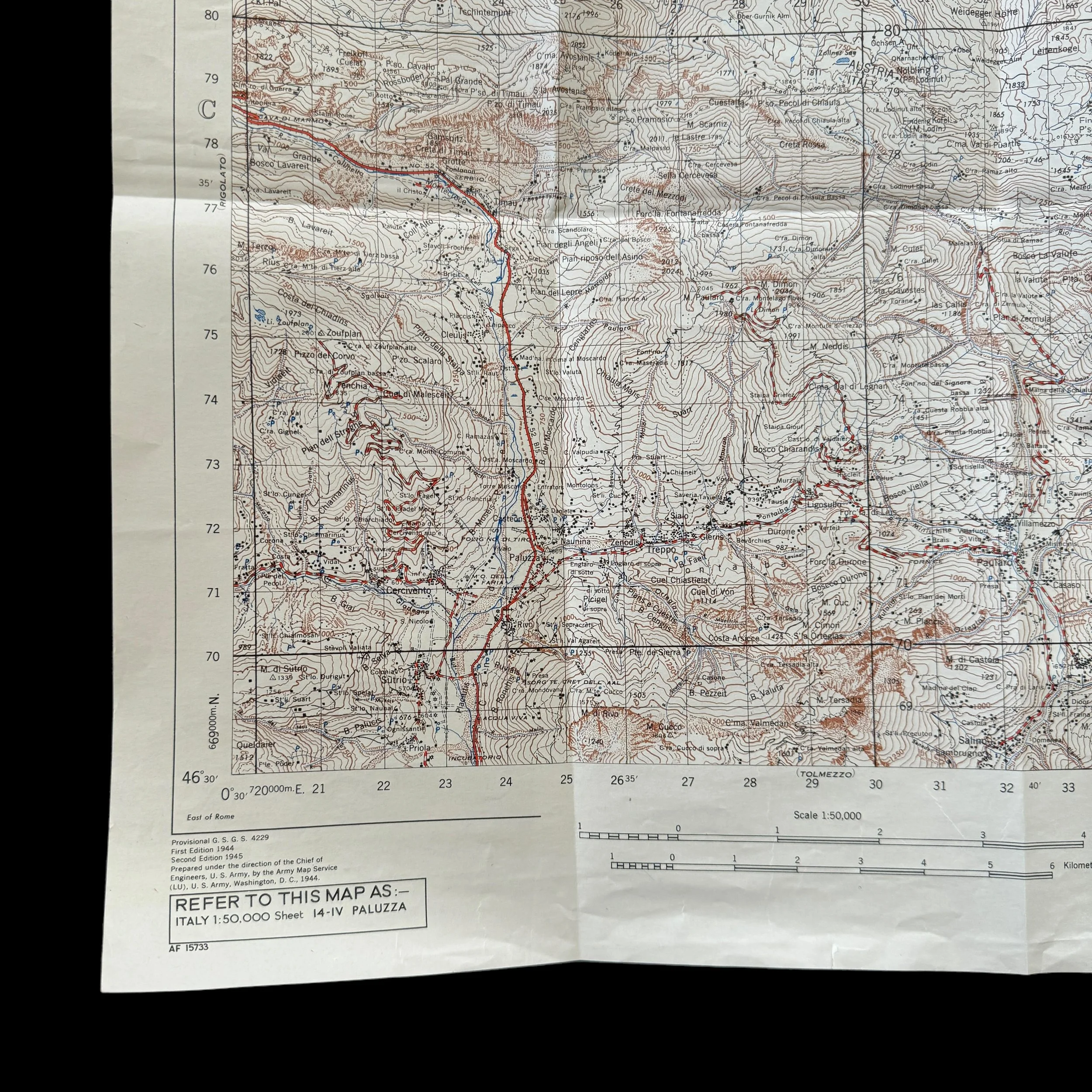
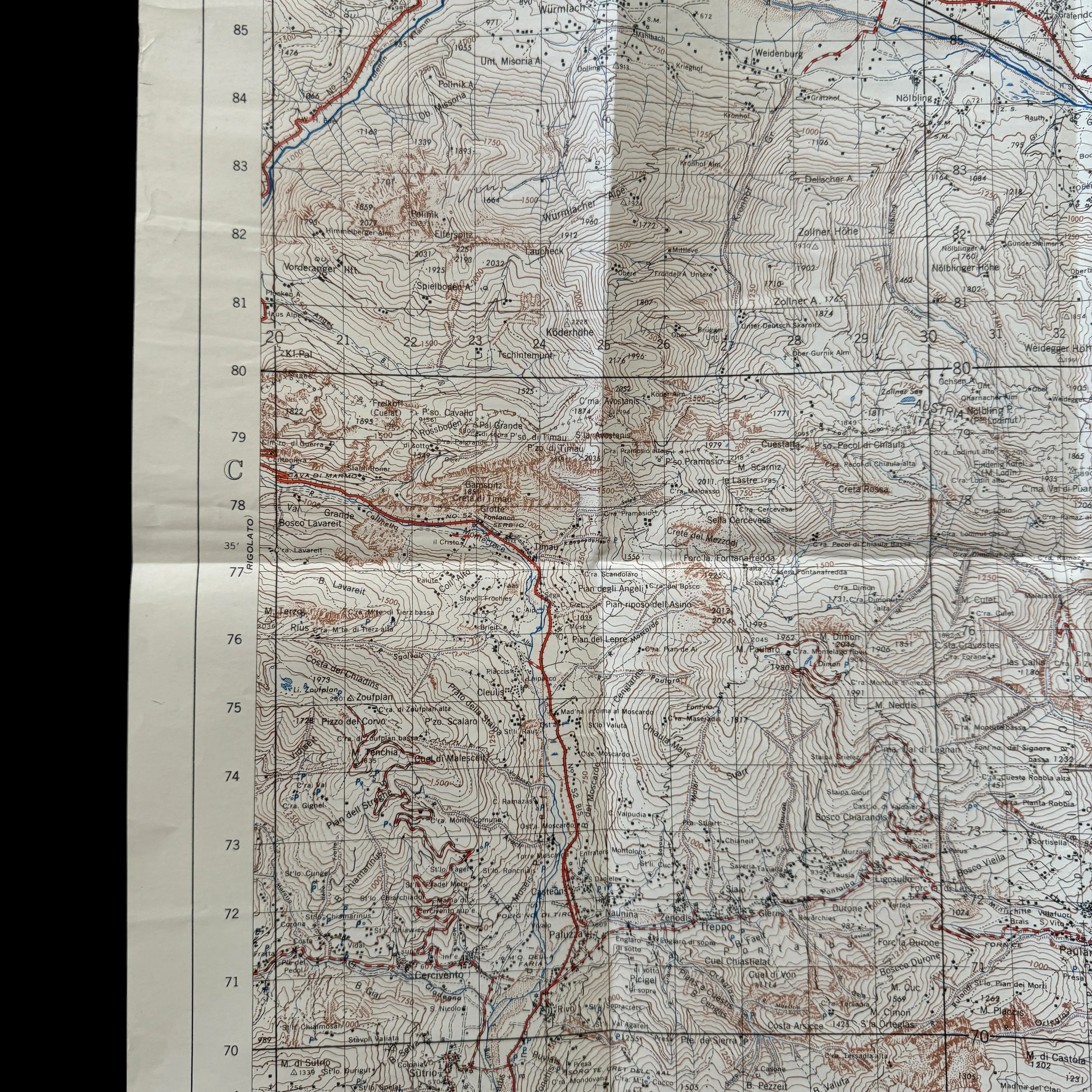
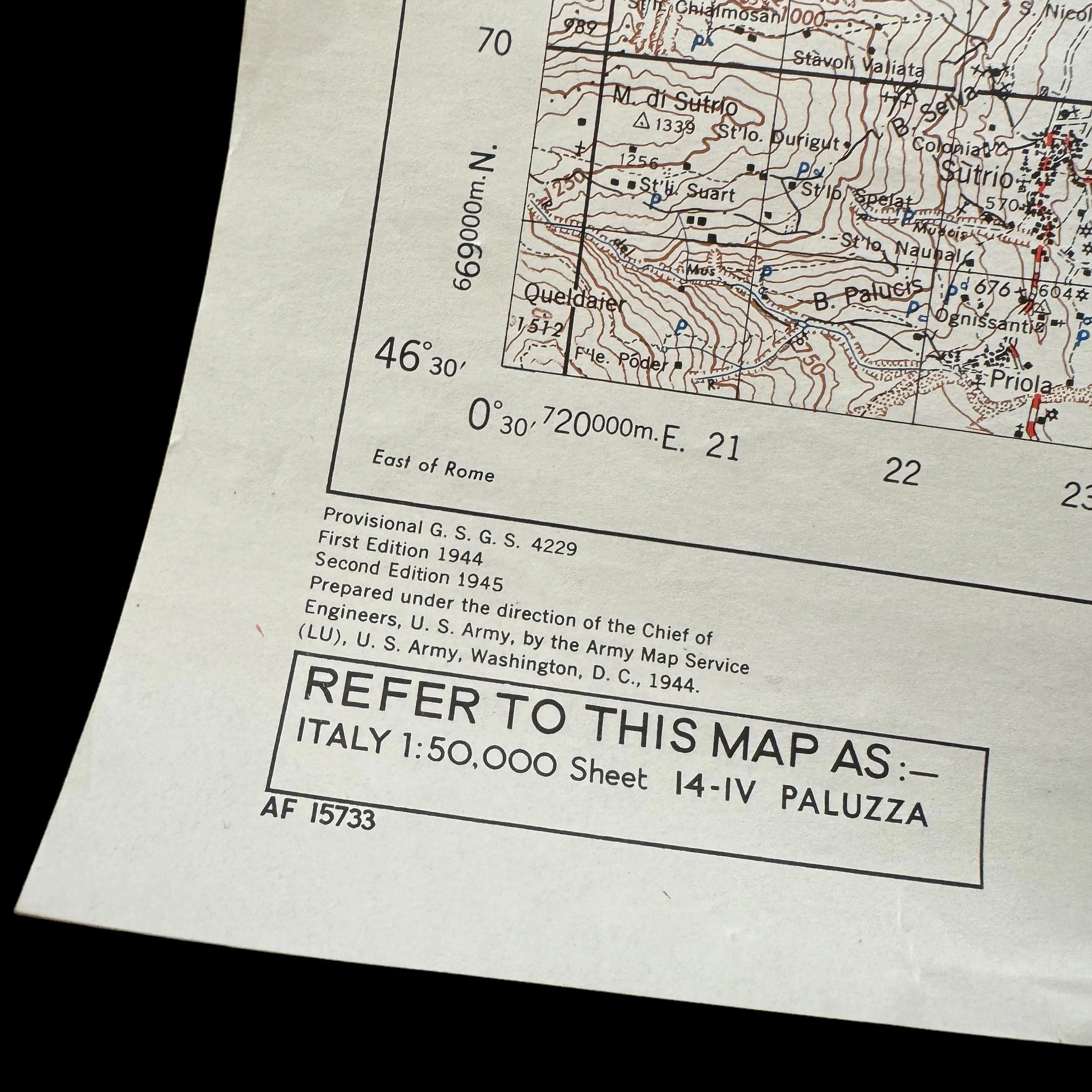
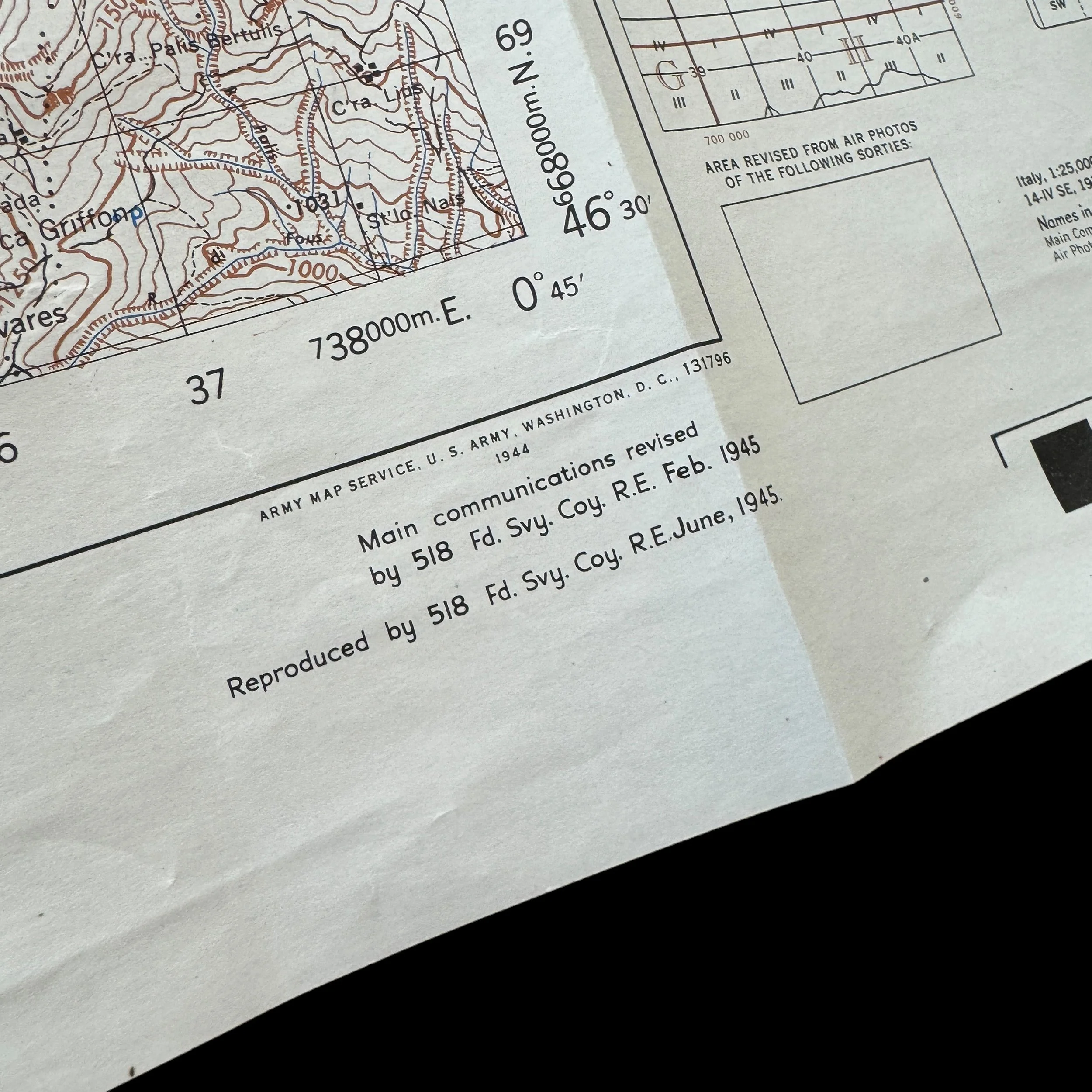
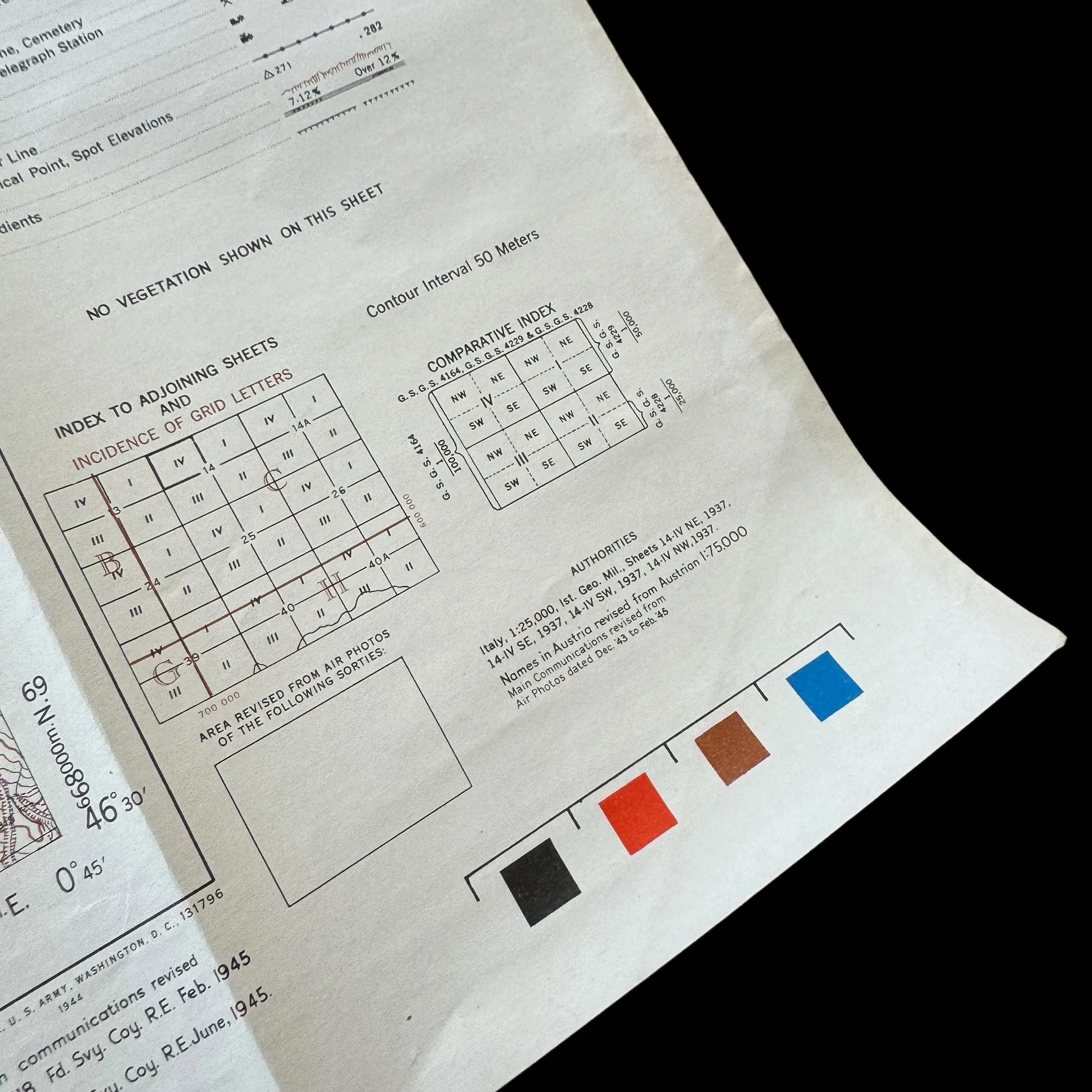
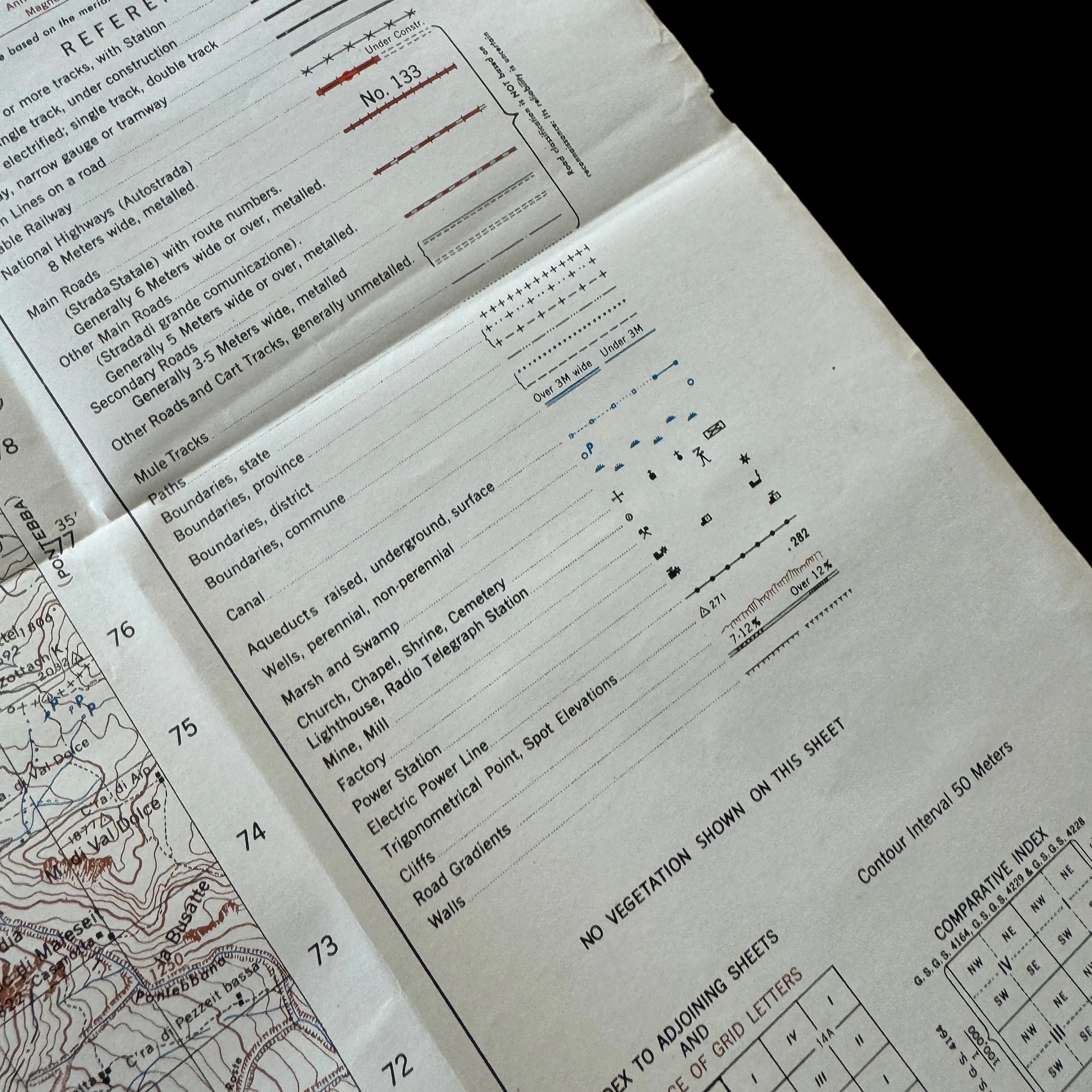
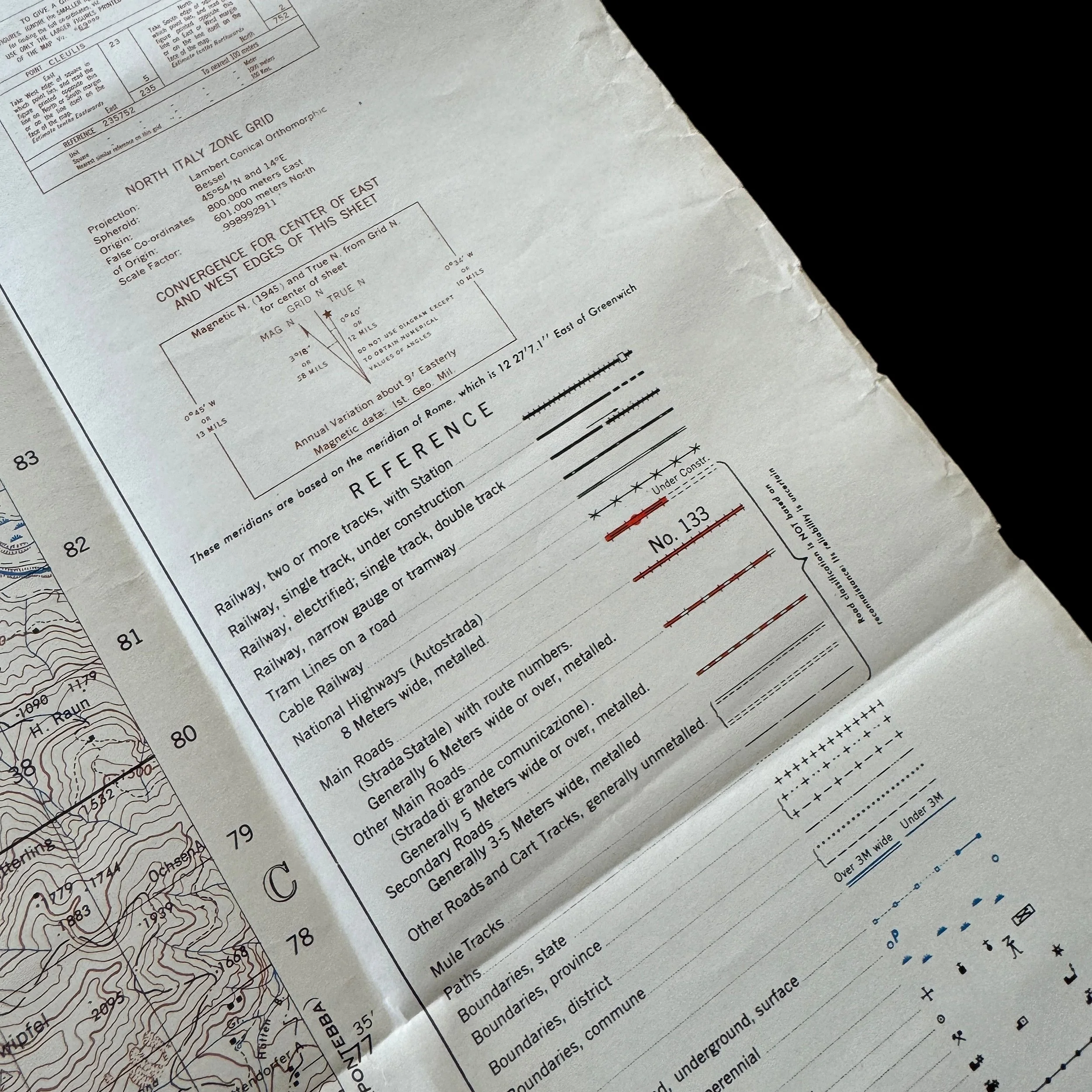
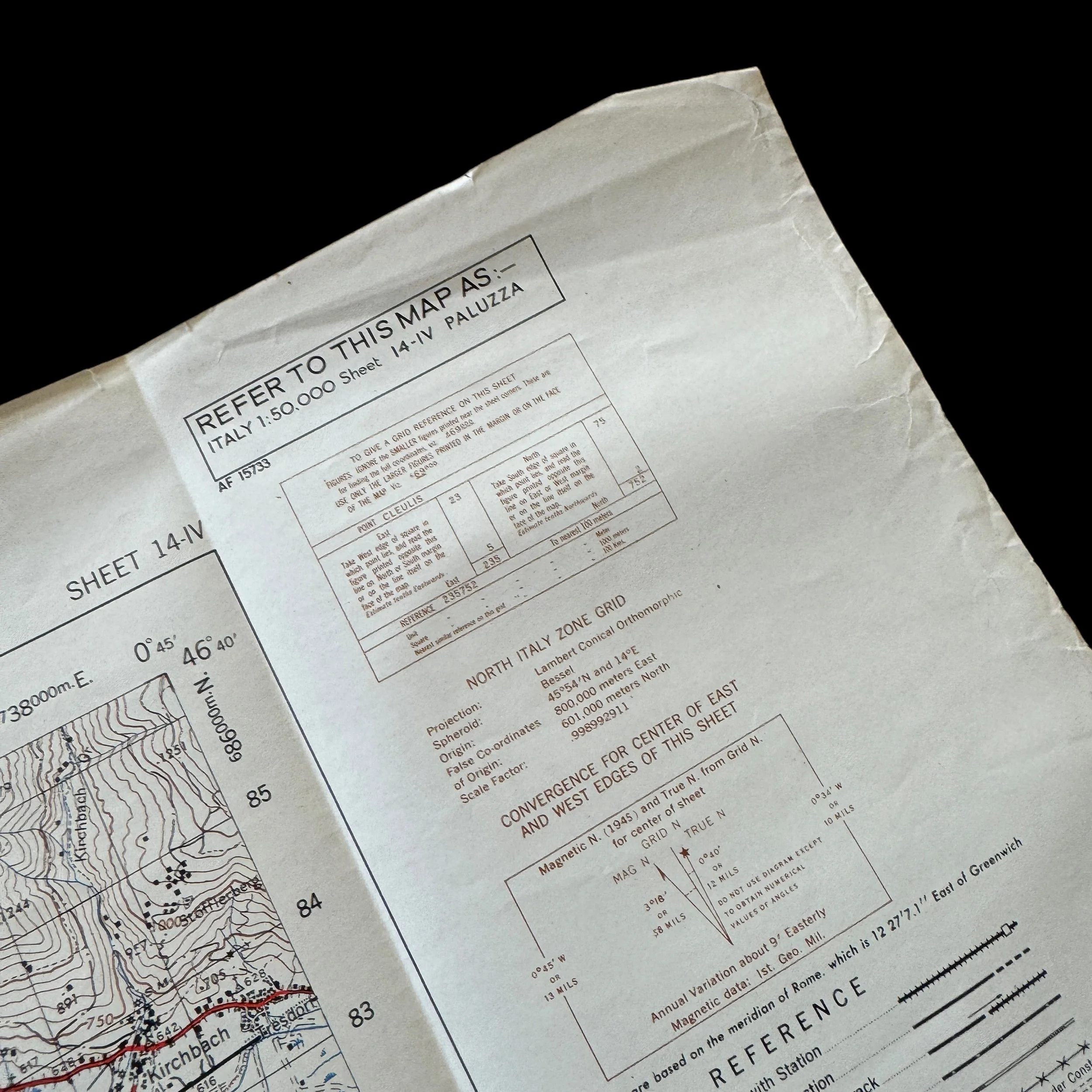
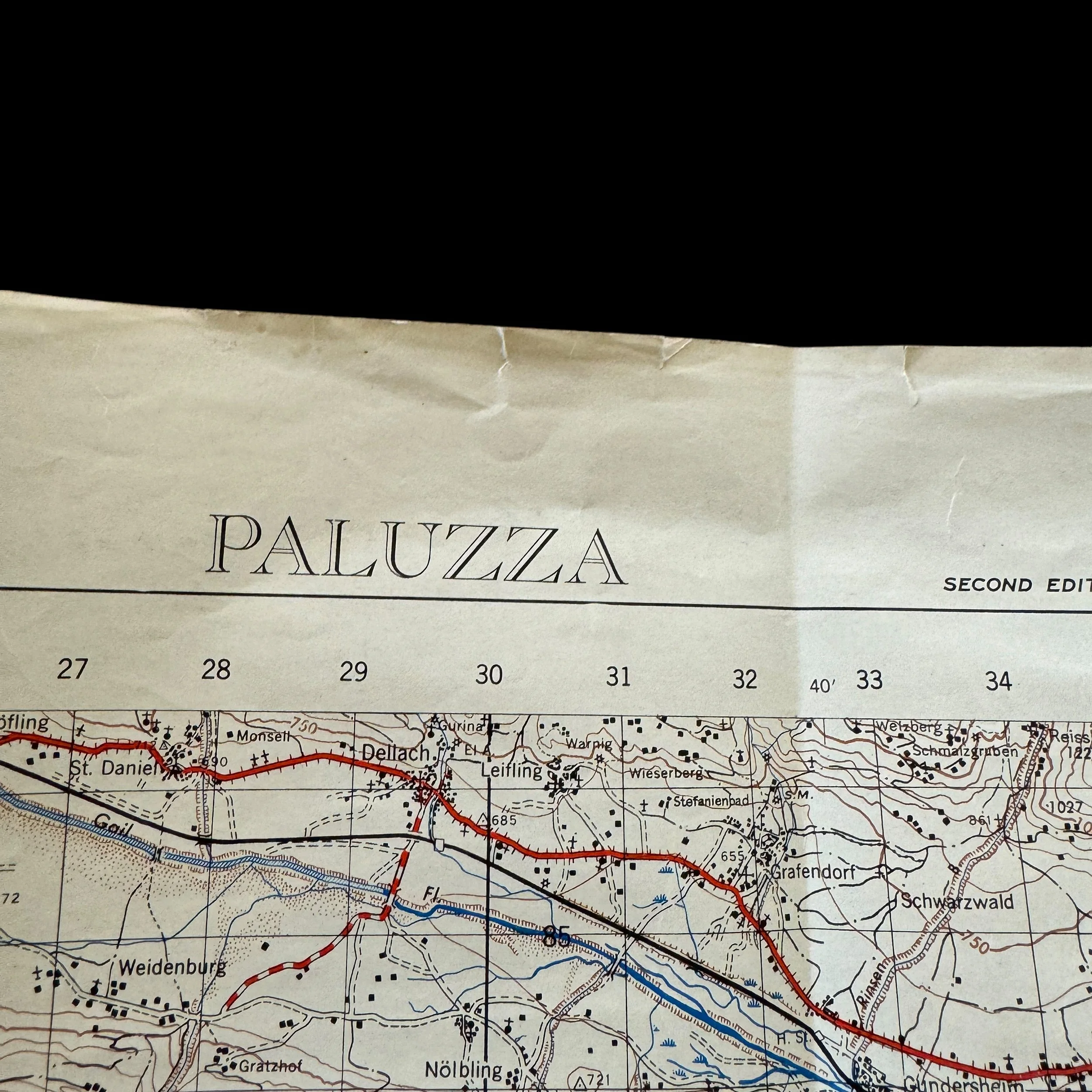
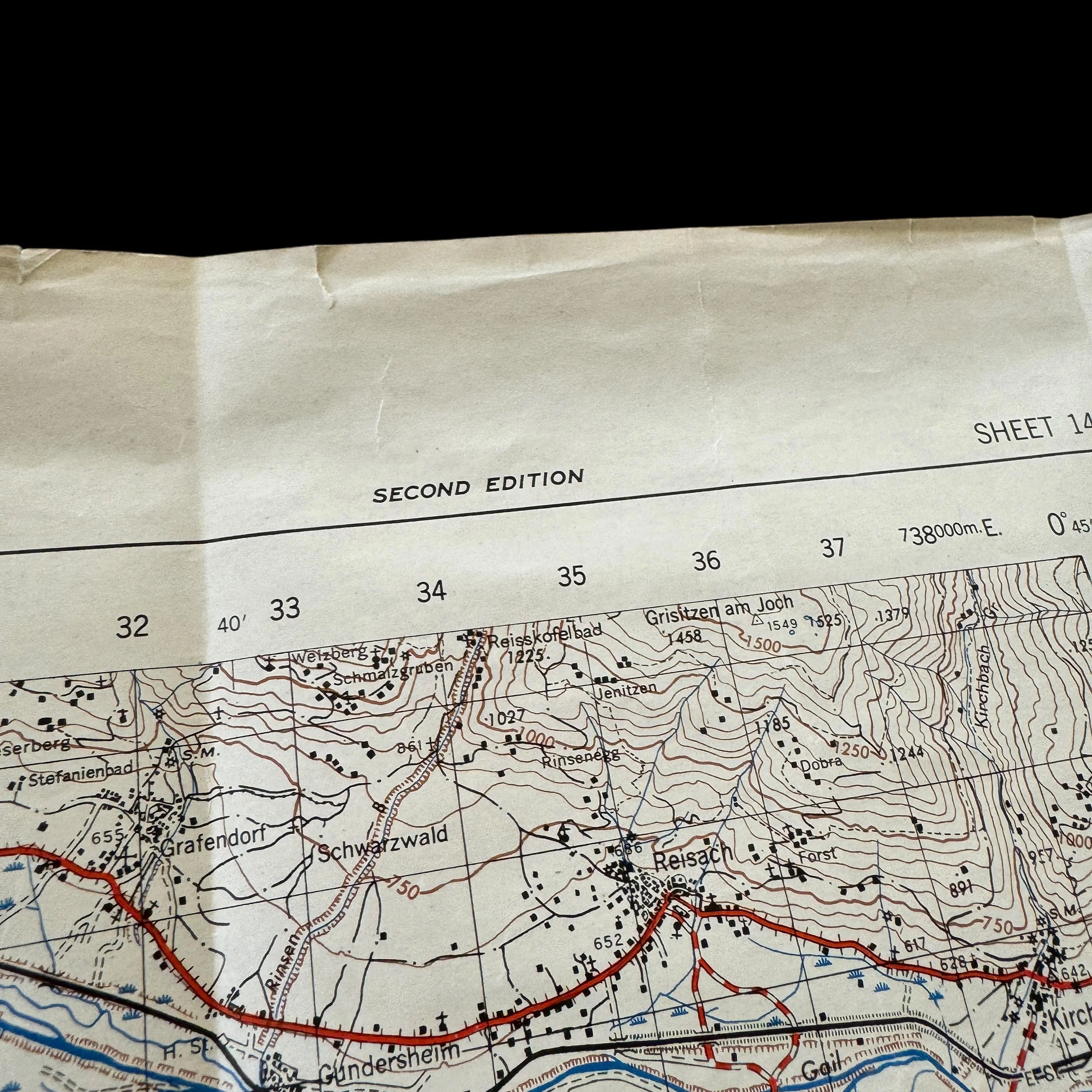
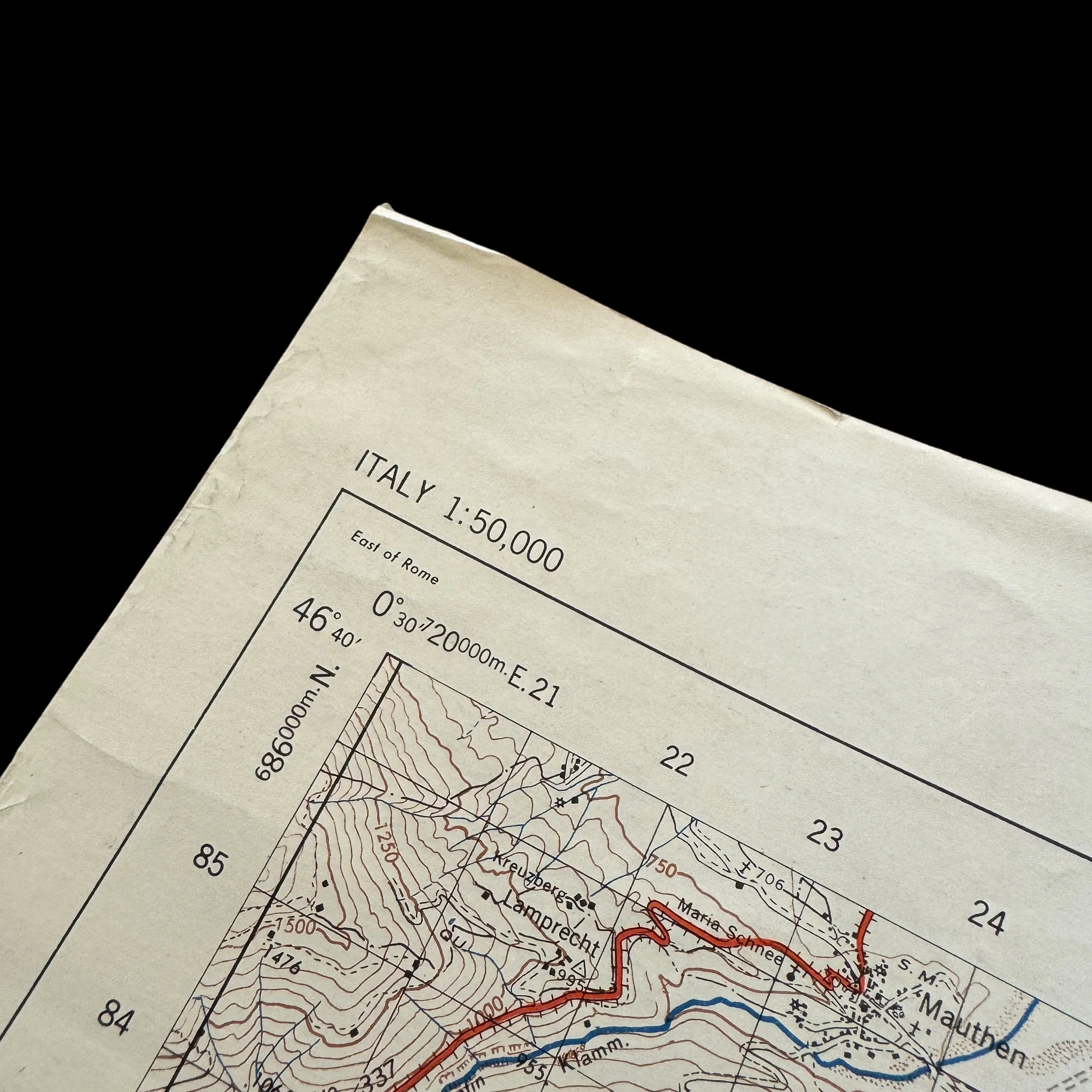

WWII Paluzza Italy U.S. Infantry & Armored Division Allied Italian Campaign Italy Combat Map
Comes with a hand-signed C.O.A.
This rare and museum-grade original WWII U.S. combat map was used by U.S. Infantry and Armored Division's during the Allied Italian Campaign. The Italian Campaign began in 1943 with the Allied invasion of Sicily, which saw a series of brutal and hard-fought battles as Allied forces pushed northward through Italy. The campaign aimed to liberate Italy from Axis control and open a new front in Europe, drawing German forces away from the Eastern Front and relieving pressure on Soviet forces.
Nestled in the Carnic Alps of northeastern Italy, near the Austrian border, the small town of Paluzza might not seem significant in the grand scale of World War II. However, this region played a critical role in the broader military operations in the Italian theater, particularly during the later stages of the war. Paluzza and its surrounding areas were strategically vital for the Allied forces as they pushed northward in their quest to liberate Italy from Nazi occupation.
Strategic Importance of Paluzza
Paluzza's location in the Carnic Alps made it a crucial point of interest for both the Axis and Allied forces. The town lies near the border with Austria, making it a potential gateway for an invasion into the Nazi stronghold. The region is characterized by rugged terrain, with steep mountains and narrow passes, which posed significant logistical challenges for any military operations. However, controlling this area was essential for the Allies to secure the northeastern flank of Italy and to prepare for a potential push into Austria and southern Germany.
The Carnic Alps were also part of the larger Gothic Line, a defensive system constructed by the Germans to delay the Allied advance. Although Paluzza itself was not heavily fortified, the surrounding mountains and valleys were dotted with bunkers, trenches, and other defensive positions. The Germans anticipated that any Allied attempt to break through the Alps would be slow and costly, given the difficult terrain and the onset of winter conditions in the region.
The Allied Campaign in Northern Italy
By 1944, the Allied forces had already secured southern and central Italy, including Rome, in their slow and grinding advance up the Italian peninsula. The campaign in Italy was notoriously difficult, with the Allies facing strong German resistance, challenging geography, and harsh weather conditions. The capture of Rome in June 1944 marked a significant victory, but the Allies were far from securing the entire country.
As the Allies moved northward, their focus shifted to breaching the Gothic Line, which stretched across the Apennine Mountains from the Tyrrhenian Sea to the Adriatic Sea. The northern section of this line extended into the Carnic Alps, making towns like Paluzza strategically important. The terrain in this region was even more challenging than in central Italy, with steep mountain passes, dense forests, and narrow roads complicating the movement of troops and supplies.
In the autumn of 1944, the Allies launched a series of offensives aimed at breaking through the Gothic Line and pushing into northern Italy. The British Eighth Army, under General Oliver Leese, and the U.S. Fifth Army, under General Mark Clark, led these efforts. While the main thrust of the offensive focused on the central and western sections of the Gothic Line, smaller units were tasked with securing the eastern Alpine regions, including Paluzza and its surroundings.
Operations Around Paluzza
The operations in and around Paluzza were part of the broader Allied strategy to outflank the main German defensive positions. The mountainous terrain required specialized troops, and many of the operations in this region were carried out by elite units, including the U.S. 10th Mountain Division and British and Canadian alpine troops. These soldiers were trained in mountain warfare and equipped to handle the harsh conditions of the Carnic Alps.
One of the key objectives for the Allies in this region was to secure the mountain passes and valleys that could be used to move troops and supplies through the Alps. The German forces, aware of the strategic importance of these routes, had fortified several key positions, including the Plöcken Pass, which lies just north of Paluzza. The pass was heavily defended with artillery, machine gun nests, and minefields, making any Allied advance extremely difficult.
Throughout the winter of 1944-1945, the Allies engaged in a series of small-scale but intense skirmishes with the German defenders in the region. The cold and snow added to the challenges, as soldiers had to deal with frostbite, avalanches, and treacherous mountain trails. Despite these difficulties, the Allies slowly made progress, using a combination of direct assaults and infiltration tactics to dislodge the German forces from their positions.
One notable operation in the area was the attack on Monte Croce Carnico, a strategically important peak that overlooked the Plöcken Pass. The U.S. 10th Mountain Division played a key role in this operation, scaling the steep slopes under cover of darkness to surprise the German defenders. After several days of intense fighting, the Allies managed to capture the peak, securing a crucial vantage point and paving the way for further advances.
The Liberation of Paluzza
By early 1945, the German forces in Italy were increasingly stretched thin, as they faced pressure from the advancing Allied armies and the growing partisan resistance within Italy. In April 1945, as part of a final offensive to liberate northern Italy, the Allies launched a coordinated assault on the remaining German positions in the Alps.
Paluzza and the surrounding areas were liberated as part of this offensive. The retreating German forces, recognizing the futility of further resistance, withdrew northward into Austria, abandoning their positions in the Carnic Alps. The liberation of Paluzza was a relatively swift affair, as the town had not been heavily fortified, and the main German defenses had already been breached in the preceding weeks.
For the local population, the end of the war brought relief but also hardship. The region had suffered from the destruction of infrastructure and the disruption of the local economy. In the years following the war, Paluzza, like many other parts of Italy, faced the challenge of rebuilding and recovering from the devastation of the conflict.
The campaign in and around Paluzza during World War II is a lesser-known chapter in the history of the Italian theater. While the battles in this region were not as large or as famous as those in central Italy, they were nonetheless important in the overall strategy of the Allied forces. The difficult terrain of the Carnic Alps tested the resolve and ingenuity of both the Allied and German troops, and the operations in this area highlighted the challenges of mountain warfare.
Today, Paluzza stands as a quiet reminder of the war that once engulfed Europe. The town and its surrounding mountains bear the scars of the conflict, with remnants of bunkers and defensive positions still visible in the landscape. For those who visit this region, the history of Paluzza during World War II serves as a testament to the resilience of the human spirit in the face of adversity and the complex nature of warfare in the rugged mountains of the Alps.
4o